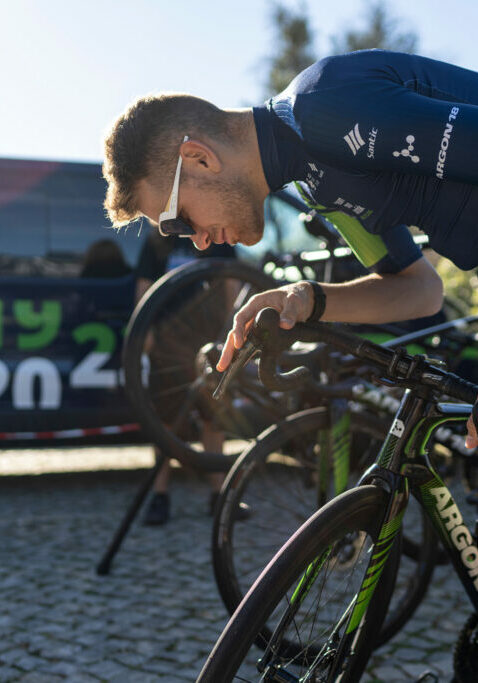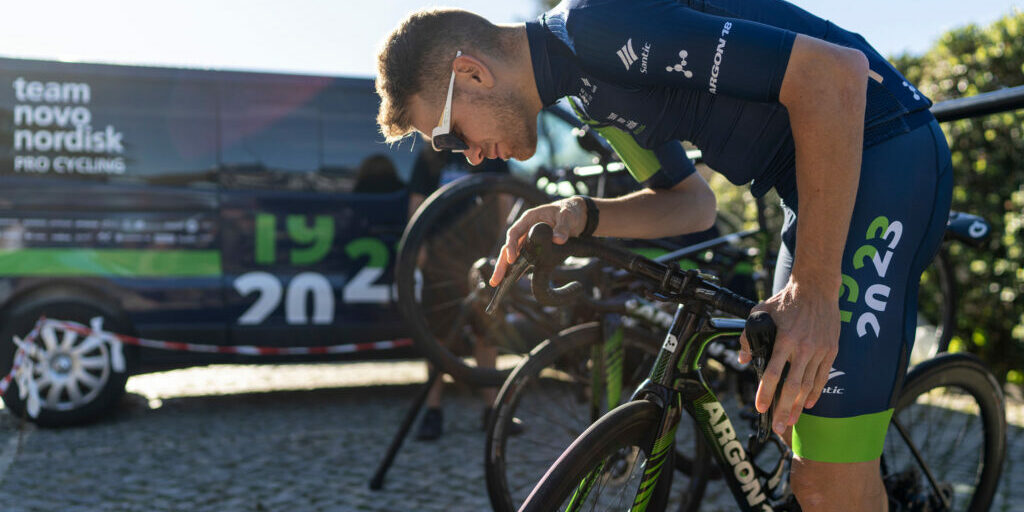pro Cycling Guide

They say you never forget how to ride a bike, but for road racers it’s much more complex than just pushing the pedals.
The language of professional cycling and its terminology can be baffling, the different types of races and their tactics can be confusing and yes, you can really be the overall winner of a multiple stage race without ever winning an individual stage! Browse our TNN Pro Cycling Guide below to learn the terminology, phrases, and pro cycling tips we often refer to in our articles, videos, and race updates.

There are different levels of registration for cycling teams. These are governed by the International Cycling Union (UCI – Union Cycliste International) and indicate which circuit of races the team can enter. However, there are opportunities for teams to secure ‘wild card’ places for races they may not otherwise be eligible for.
UCI Classifications
The different registration levels for male teams are:
UCI Continental Teams
consists of professional or amateur riders, contesting (competing in?) races on the continental circuit
UCI Professional Continental Teams
consists of at least 14 professional riders, contesting (competing in?) races on the professional continental circuit
UCI Pro Teams
this status is the highest level of registration, and carries the right and obligation to participate in all World Tour races.
Team Novo Nordisk Pro-cycling Team is a UCI Professional Continental Team and will race in road races and Tours throughout the year.
Cycling Team Roles
Cycling teams include riders with different roles and unique skills. Overall great stamina, astute strategy and powerful acceleration are vital to achieve success. Cycling is a hugely demanding sport, which means it takes a whole team to give just one rider the chance of success. Aerodynamics and energy conservation are a crucial part of cycling tactics, so effective teamwork is critical to protect and shelter a team’s leader--the rider deemed to have the best chance of success at a given race. The team’s leader may change depending on the profile or type of race.
Riding directly behind another cyclist, called drafting, places a rider in a slipstream, which dramatically reduces wind resistance and the effort required to ride at the same speed. It is estimated that up to 40% energy can be conserved through drafting, which makes it a key pro cycling tip for competition strategy.
A key responsibility of the members of the TNN team is to guard and support the leader through pacing, drafting and protection in the peloton, or main group of riders. Where a cross wind is experienced, the riders will form an echelon or diagonal line across the road to maximise the effect of drafting.
Certain members of the team will act as a domestique, the team support person, assisting the leader in additional ways such as fetching food and drinks from team vehicles.
Specialised skills are also required for mountain and flat stages. The climber will be the rider in the team who can ride especially well on highly inclined roads and the sprinter is the rider who can finish a race very explosively by accelerating quickly to a high speed.
Race Types
Each racing circuit consists of a number of different races, which include one or more of the following forms:
Road Race
a straight final held on closed public roads. Cyclists start together in a bunch and the first to cross the finish line is the winner. The courses are of varying distances and can take several different formats:
- One-day races from one point to another
- A circuit (a specialised circuit race is also known as a criterium or crit race)
- Stage races consisting of several races, or stages, ridden consecutively also known as Tours. The most well-known are the three-week long ‘Grand’ Tours; the Giro d’Italia, Vuelta a España and the most famous of all, the Tour de France. There are also a number of shorter duration stage races such as the Tour of California, the Tour of Argentina, the Tour of Denmark and the Tour of Turkey
Individual Time Trial
individual cyclists start at regular intervals e.g. 90 seconds apart and the fastest over the course is the winner. This type of race is often a crucial element in a stage race.
Team Time Trial
follows the same principle as for the individual time trial but the whole team works seamlessly together to post the best time for the overall team.